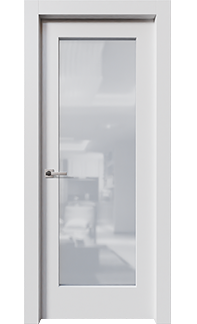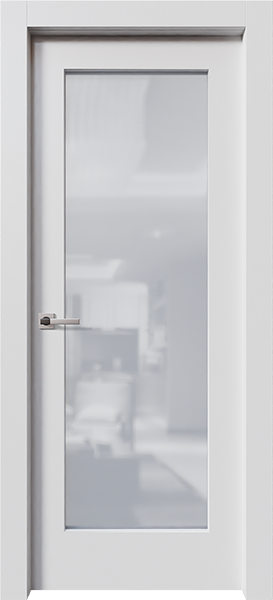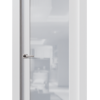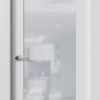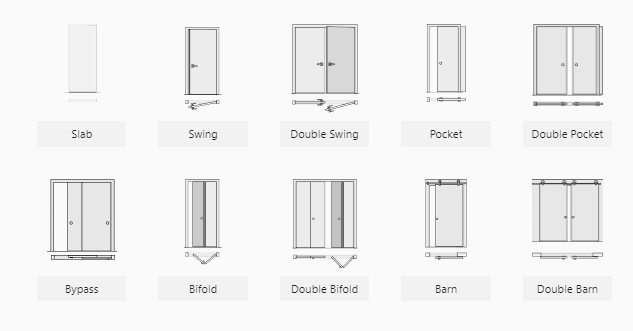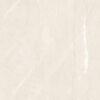Description
THE DOOR NAME ORIGIN – “SHAKER STYLE 1 LIGHT LAMI GLASS”
This interior door model is a quintessential shaker style job that has every basic advantage of this particular interior door category. Wow, that was a mouthful. Well, let’s clarify it a little, shall we? Here goes:
One. As it is with shaker style furniture which was originally popularized by the eponymous movement back in the middle of the Nineteenth Century, similarly designed interior doors – at least those manufactured by Almes Doors, anyway – embrace the unapologetic simplicity of the final product’s overall appearance. Here you’ll find no raised or sunken moldings, no ornaments, nothing at all that would remind you of the Baroque or Classicism periods. This interior door, it would appear, is a strictly functional device, as reflected by its lower-than-usual price. In other words, it will save you money without losing any of the typical advantageous features that come with pretty much any of our interior door models.
Two. The single glass panel down the middle is a feature that even the illustrious monarchs and aristocrats of old would envy you. An interior door with rows of little lites was all they could hope for as they walked up and down the great halls of their palaces and country mansions. They wished their interior doors could let in as much light as this one, only their engineers, as talented as they were, had no idea how to make a perfectly safe large glass panel. Our engineers can. Laminated glass is shatter-proof, and there will be no glare, either. It is also flexible, which makes it impact-resistant.
Three. The “wrap” method of applying the finish is nothing like its predecessors. It only became available recently thanks to a number of major technological breakthroughs, and naturally our engineers have been taking advantage of it, much to everyone’s satisfaction – the customers as well as the designers. You will find traditionally finished interior doors in some of our collections, and that’s because there’s nothing wrong with the age-old approach. Some folks like it. How could anyone blame them? Old and old-fashioned are two very different things. That said, the “wrap” method is by far more efficient, a great deal less expensive, and, because the process works on molecular level, essentially fusing the finish and the surface when the heat and pressure are applied, it renders the final product fade- proof, warp-proof, and scratch and water resistant, the latter being especially important in humid regions – such as, for instance, a major costal city.
Fade-proof? Yes. This interior door will continue to look brand-new for many years.
As all of our interior doors, this one comes with all the amazing, state-of-the-art hardware, such as the Italian-made 3D-adjustable self-lubricating concealed hinges (you might want to explore this option further in the hardware section). Apart from the fact that the adjustability makes the installation a great deal easier, while the self-lubrication ensures that your interior door will never creak, the aesthetic value of concealed hinges (i.e. no knuckles, no leaves, and no pin, imagine that!) is enormous.
This is one amazing interior door.
FINISH: PRIMED
The advantages of this approach – of this type of interior door finish – are fairly obvious. Pick a color, any color that suits your projects best. Mix and apply. Re- coat whenever you feel it is necessary to do so. Touch it up. It gives you, the proud owner of these interior doors, complete freedom of choice, and the significant savings, especially where it comes to bulk orders, can be a true source of joy.
As Kurt Vonnegut mentions in one of his novels (Bluebeard, unless I’m mistaken … check it out when you get a chance), the thrill of laying on colors is a large part of the artist’s professional satisfaction. In other words, a keen pleasure.
When back in the remote past visual arts became a field dominated by professionals rather than hobbyists, the main problem of “just laying on paint” became obvious: you can’t.
The medium of choice back then was egg tempera, a permanent, fast-drying substance consisting of colored pigments mixed with a water-soluble binder medium, usually glutinous material such as egg yolk. Portraits and ornaments were executed in this medium, and the wood panel was the surface of choice. One of tempera’s interesting features is that it is not as easily absorbed by wood as other mediums. Some sort of primer was necessary, of course, but pretty much any substance that dried evenly could be used.
The drawbacks of tempera, or pintura al temple, as the Spanish call it, only became obvious with the advent of the Renaissance, when the leading representatives of the trade turned to oil (and interior doors suddenly became a great deal less crude, but that’s a story for another day).
Oil painting is the process of “painting with pigments with a medium of drying oil as the binder.” Commonly used types include linseed (highly preferable in art, though not necessarily in interior doors, mind you), poppy seed, walnut, and safflower.
Today, five hundred years later, it is safe to say that oil is more versatile than pintura al temple – by orders of magnitude. Specifically, the contrasts achieved through the former are much greater, the darks are far deeper, and three- dimensional, highly realistic images are much easier to achieve. Next time you visit a museum, take a closer look at pintura al temple portraits. All of them, without exception, come off as a bit “flat” as opposed to their latter-day counterparts.
Also, where glazing is concerned …
Glazing: a painting technique in which a transparent layer, with just a touch of pigment, is laid over a previously painted surface, allowing light to travel through the glaze and be reflected back off of the opaque layer below. Gentle shadows, subtle changes of color, smooth transitions – all these can be achieved through glazing, which was used by all artists up until the middle of the Nineteenth Century, when artist tubes were invented, revolutionizing the field, and other techniques began to be explored.
Tempera enthusiasts (it takes all kinds to make a world) will assure you that glazing is not just possible in pintura al temple but is actually the basis of the whole enterprise. Well, what are you going to do? They’re enthusiasts.
Anyway, la peinture à l’huile, as the French call it, re-introduced the ancient problem of most surface’s propensity to absorb dipingere, as the Italians call the stuff. Wood or canvas, it is all the same: you’re not going to get very far without a good primer.
Experiments were conducted, and soon rabbit skin glue emerged as the least expensive and most effective solution. It was easy to apply. It dried evenly. It made the application of the l’huile stuff on top of it a walk in the park.
There were drawbacks. Today, rabbit skin glue is considered to be a major cause of cracking by most modern conservators. (Remember, when you visited the Metropolitan Museum of Art – and did you see those interior doors? … some of them are quite something … – most “old masters” pictures are completely covered with a cobweb of cracks? There you go). Because the glue is hygroscopic, it continually absorbs moisture from the atmosphere, causing the glue to swell and shrink as ambient humidity levels change. Over many humidity cycles, this repeated flexing causes the brittle oily layers to crack.
To combat this problem, modern primers are made of acrylic materials which are guaranteed not to cause any damage to the dipingere. No bubbling, no cracks. Your interior doors are safe.

